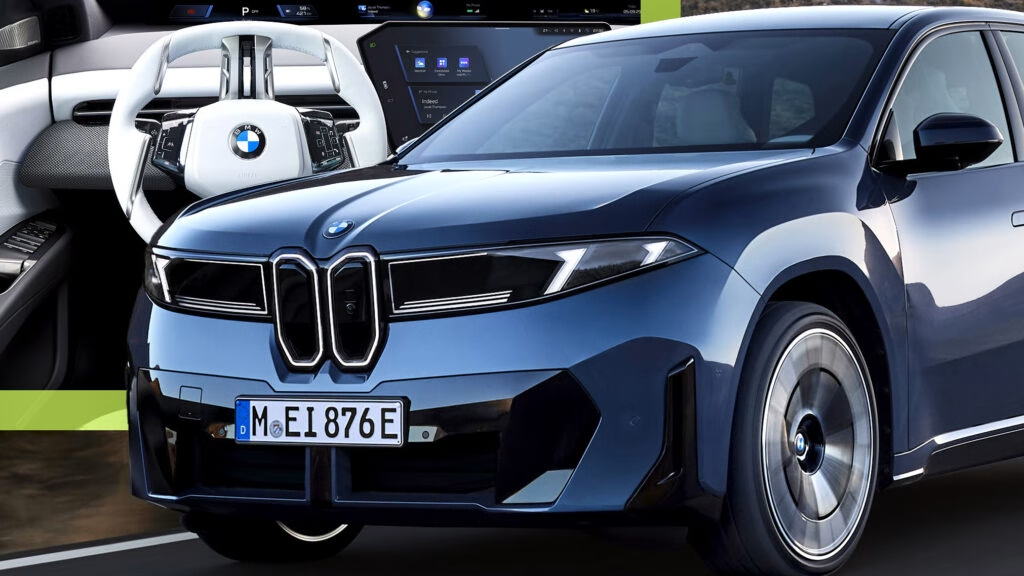What’s Different About the 2027 BMW iX3 and Why Does It Matter?
BMW’s 2027 iX3 isn’t just another electric SUV. It’s the first production model to ride on the brand’s Neue Klasse platform—a ground-up rethink of what a BMW can be in the electric age. That means new styling, fresh tech, and a driving experience that’s more digital and dynamic than anything the company’s done before. The iX3 50 xDrive, launching in the US in mid-2026, packs 463 horsepower, a 400-mile EPA-estimated range, and a price tag around $60,000. But those numbers only tell half the story.
How Has BMW’s Design Language Evolved with the iX3?
If you’ve followed BMW’s design journey, you’ll notice the iX3 is a bold step forward. The vertical kidney grille and twin headlights nod to classics like the 2002 Series, but the execution is clean and futuristic—think less chrome, more sculpted surfaces, and glossy black accents replacing the usual SUV plastic cladding. The profile is crisp, with rectangular contours and that signature Hofmeister kink, but it’s arguably the least “traditional” BMW silhouette in years. Out back, horizontal taillights and a recessed spoiler section give it a planted, athletic look. Aerodynamics are a big deal here: the drag coefficient drops to 0.24, a significant leap from the previous iX3’s 0.29, which helps with both efficiency and range.
Want something sportier? The M Sport package adds a more aggressive body kit, 20- to 22-inch wheels, and blue brake calipers. Go for the M Sport Professional, and you get an illuminated grille and blacked-out trim. The iX3 is also a bit bigger than before—almost two inches longer and with a wheelbase stretched by 1.3 inches—translating to more room inside.
What’s Inside: Does the Neue Klasse Cabin Live Up to the Hype?
Step inside, and it’s clear BMW is betting big on tech. The Panoramic iDrive stretches from pillar to pillar, sitting just below the windshield. It’s paired with a 17.9-inch central touchscreen and an optional 3D head-up display, all running the new BMW Operating System X. The vibe is minimalist, almost lounge-like, but not at the expense of usability. Physical controls remain for the essentials—wipers, indicators, mirrors, gear selector, and volume—while climate functions move to the touchscreen. There’s also a voice-activated assistant, but as with any system, real-world usability will be the ultimate test.
Creature comforts? You’ll find a 13-speaker Harman Kardon sound system, panoramic moonroof, and three-zone climate control on the options list. The five-seat layout is roomy, thanks to the EV-specific platform, with 30.4 cubic feet of cargo space (expandable to 65 cubic feet) and a handy 2-cubic-foot frunk. Storage nooks abound, making it practical for families or road-trippers.
How Smart Is the iX3? A Look at BMW’s “Superbrains” and Tech Features
BMW calls the iX3 a “software-defined vehicle,” and that’s not just marketing fluff. Four high-powered computers—nicknamed “superbrains”—handle everything from driving dynamics to infotainment and automated driving. The “Heart of Joy” manages the drivetrain, brakes, and steering, aiming to deliver that signature BMW feel, even in an EV. Another computer oversees the advanced driver assistance systems, including the standard Active Driving Assistant Plus and the optional Highway Assistant, which allows for hands-off driving on certain roads.
The iX3’s digital nervous system means it’ll get smarter over time, thanks to over-the-air updates. Expect improvements in everything from range management to self-driving capabilities as the tech matures.
How Does the Neue Klasse Platform Change the EV Game for BMW?
The Neue Klasse platform is BMW’s big play for the future. It’s built around an 800-volt architecture, enabling faster charging and better performance. The iX3 features BMW’s sixth-generation eDrive system, with new high-density cylindrical battery cells and dual motors for all-wheel drive. The launch model delivers 463 hp and 476 lb-ft of torque, good for a 0-60 mph sprint in 4.7 seconds. Top speed? 130 mph—plenty for US highways.
Drivers can toggle between Sport, Efficient, Silent, and Personal modes, tailoring the experience to their mood or commute. And with a near-perfect 48.6/51.4% weight distribution, the iX3 aims to feel as balanced as any classic BMW.
What About Range and Charging—Is It Competitive?
BMW hasn’t disclosed the exact battery size, but the 400-mile EPA estimate puts the iX3 right at the top of its class. Thanks to 400 kW DC fast charging, you can add 230 miles of range in just 10 minutes, or go from 10% to 80% in 21 minutes. The model supports bi-directional charging, so you can power your home or gadgets if needed. It comes standard with a NACS port (plus CCS adapter), and the charge port flap opens and closes automatically via sensors—no more fumbling in the rain.
Is the iX3 Priced to Win, and Who Are Its Main Rivals?
With a starting price around $60,000, the iX3 undercuts BMW’s own X3 M50 xDrive by about $6,000 and is expected to line up closely with the upcoming Tesla Model Y Performance. It’ll also go head-to-head with the Audi Q6 e-tron, Porsche Macan EV, Mercedes GLC EV, and Volvo EX60. Production for US models kicks off in Hungary in early 2026, with deliveries expected that summer.
What’s Next for BMW’s Neue Klasse Strategy?
The iX3 is just the opening act. BMW plans to roll out nearly 40 new or refreshed vehicles on the Neue Klasse platform by 2027, including a four-door sedan that’ll serve as the electric counterpart to the iconic 3-Series. CEO Oliver Zipse calls it a “huge leap” in design, technology, and driving experience—and if the iX3 is any indication, he’s not exaggerating.
The big takeaway? The 2027 BMW iX3 isn’t about perfection—it’s about smarter adjustments. Start with one change this week, and you’ll likely spot the difference by month’s end.

